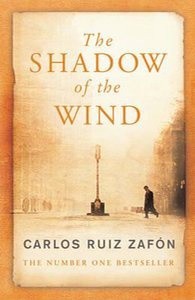
When we first meet Isabel, she is in the prime of her youth—beautiful, irresistible to men (every male character seems to eventually fall in love with her), intelligent, poised, vibrant, hungry for life, and marching to her own drums. She has all the potential to be an exceptional woman. To remove the obstacles of poverty that can hinder realizing that potential, her admiring dying cousin, Ralph, shares half of his inheritance with Isabel who, of course, is unaware that she owes her wealth to him, instead of his father. Ralph believes that with this money, Isabel can do what she wants—marry (or not) as she pleases and live in a style and manner based only on her good judgment.
Isabel travels to satisfy her curiosity and to learn about the world in order to grow her mind. After a year or so of travel, she seems to think she has seen and learned enough. She thinks of marriage. She has already rejected the suit of a fine-looking Lord with “radical” views and who is liberal with his tenants—“half of England,” as someone joked. Among the eligible candidates, you get the feeling James might have considered him the best match for her own exceptional characteristics.
But Isabel chooses Osmond, a man who looks polished and impeccable on the surface but whose shallowness is evident to many people including her cousin Ralph. Although Isabel, generally values his judgment, she dismisses it in this case because Ralph confesses to being in love with her. Osmond is not rich and not seemingly interested in doing great deeds—someone relatively ordinary. It is a choice that seems out of character for Isabel. Is she afraid to be outshone by Lord Warburton? Does she think he is too good for her? Or, is there simply no physical attraction towards him?
In fact, Isabel has been duped into marrying Osmond by her friend, Madame Merle, with whom Osmond had an intimate history. Isabel proves to be naïve enough not to know that charming and worldly but calculating Madame Merle has worked her like a pawn. In this decision—probably the most important one in her life—Isabel appears to have squandered her gifts and exhibited poor judgment.
I am actually rather appalled and incredulous to see someone described as having superior attributes prove herself so dense. How is that possible? It seems to me inconsistent, from a psychological perspective. James does not enlighten us too much on Isabel’s choice. Maybe, to him, it is also a puzzle, but he does suggest that by this marriage, Isabel might think herself benevolent by bringing wealth to the man she is marrying. Does she, in fact, feel that she can maintain a certain level of freedom by marrying someone not quite so superior? Will marriage to a nobleman stifle her?
Once married, of course, both Madame Merle and Isabel’s chosen one show their true colors. He wants to conquer her spirits in the name of being the all-knowing authoritative husband. She does not take to that kind of treatment well, as we may expect, and a psychologist may say she responds by being passive aggressive. That is, by word and deed, she seems to comply with her husband’s wishes but by failing to produce what he wants of her, she actually undermines them. It is a tug of war, barely disguised.
Isabel is profoundly unhappy—again, as we may expect—and her unhappiness is aggravated when she confronts the truth about why her husband married her. And yet, in the end, unhappy as she is, she chooses to suffer because she believes in the sanctity of marriage and considers herself bound to it. Remaining married to this man is looking more like the sacrifice of her life, although in her mind, it may be a heroic and romantic one. To my admittedly more modern view, Isabel is a coward. Not at all what I would expect from someone intelligent, vibrant and with a mind of her own.
I find it curious that Henry James would title his book The Portrait of a Lady. That definitive article “The” is what bugs me, especially coming from a man who never married and who may not have had lasting relationships with women. Why not A Portrait…?. Surely, Victorian ladies were not all like Isabel Archer. Two of them, in fact, are relatively well-drawn in the novel—Madame Merle and Henrietta Stackpole.
Maybe, the point Henry James is trying to make is this: That the real Lady of Victorian times was, in fact, a tragic figure, possessing contradictions that can confound us. She could have wonderful attributes or, at least, wonderful potential, but she could waste them and sacrifice her own happiness in the name of being a lady.
My interpretation of the end of the novel does not jive with the more optimistic one of some who believe that Isabel, in fact, will finally be delivered from her misery, after an earlier suitor, Caspar Goodwood, shows her escape is possible (see, for instance, The Reading Life: Henry James in a Panic. Much has been made of this passage:
She had not known where to turn; but she knew now. There was a very straight path.
To me, “a very straight path” embodies the sense in which James thought of Isabel as the lady—one so exquisitely attuned to society’s standards of demeanor that she would follow them at all costs and reject the chance she has to leave a disastrous existence. By dint of personality and/or circumstance, Henrietta Stackpole and Madame Merle could not or did not choose to be so bound with those conventions. So, perhaps, by James’s—and Victorian society’s—definition, neither could have been “the lady”.
Victorian novels have heroines with more chutzpah than Isabel. Some of Elizabeth Gaskell’s heroines, for instance. You may argue that they are not in the same privileged class and, therefore not as beholden to conventions. But if you look at real figures, you’ll find some women of the period with feminist leanings, including a few who inherited money. Were they “ladies?” If Isabel Archer was “the portrait of a lady,” then perhaps they were not. Thankfully.
 My foray into food in fiction reaches a new height in my latest novel, Sugar and Spice and All Those Lies. Gina , the main character, cooks for a restaurant that serves haute cuisine.
My foray into food in fiction reaches a new height in my latest novel, Sugar and Spice and All Those Lies. Gina , the main character, cooks for a restaurant that serves haute cuisine.















 For Werner, an orphan and part of Germany’s World War II youth indoctrination program, the allusion is more figurative and a little more complex. He chooses to be blind to the destructive effects of war because the program promises a way out of the coal mines―his inevitable future, asserted orphanage officials.
For Werner, an orphan and part of Germany’s World War II youth indoctrination program, the allusion is more figurative and a little more complex. He chooses to be blind to the destructive effects of war because the program promises a way out of the coal mines―his inevitable future, asserted orphanage officials.





 1
1
 1
1